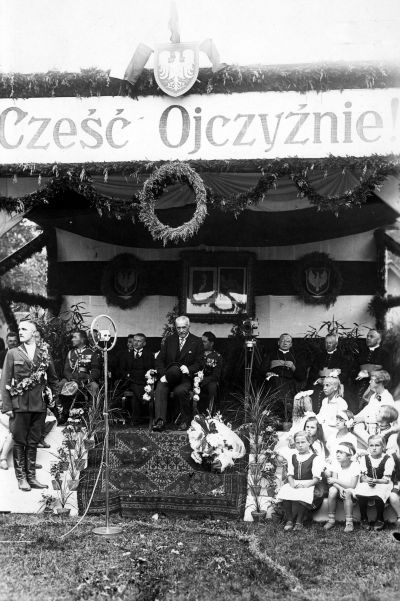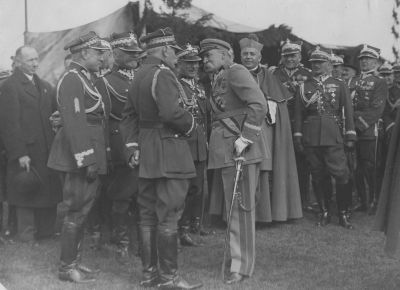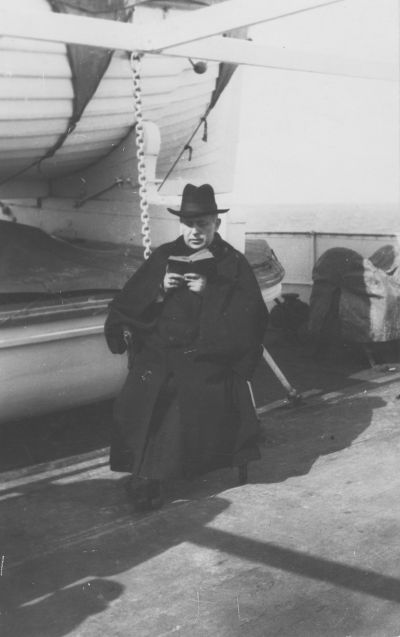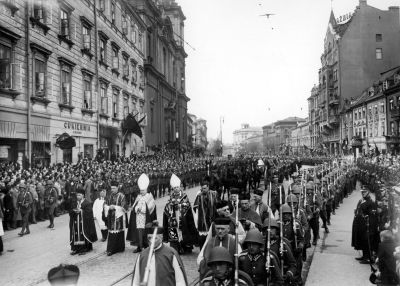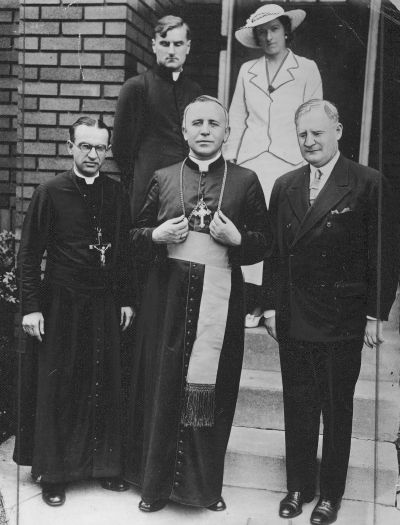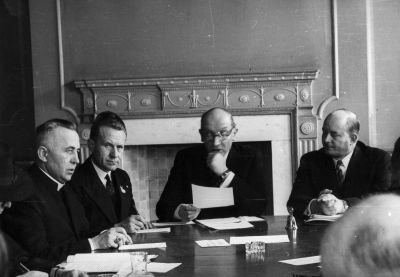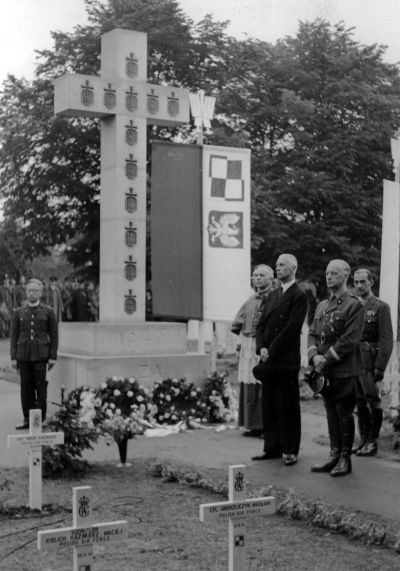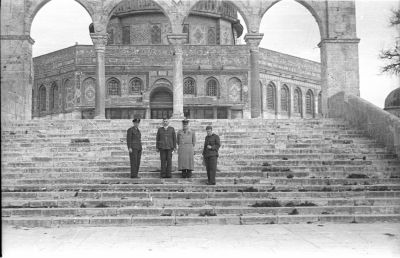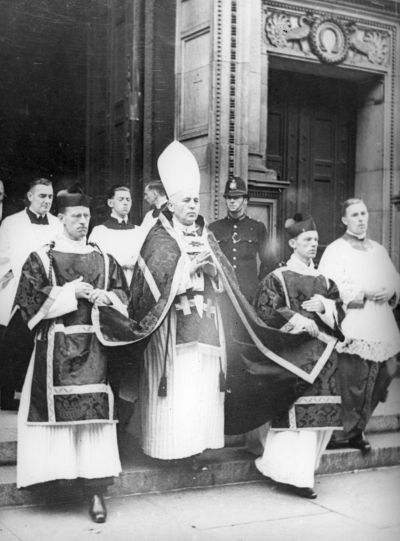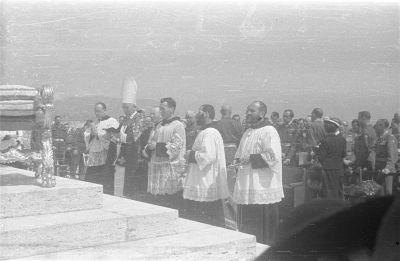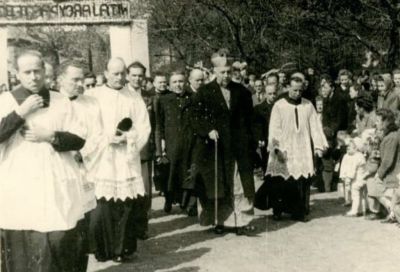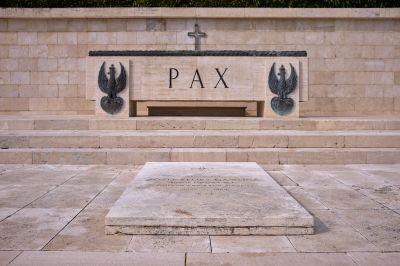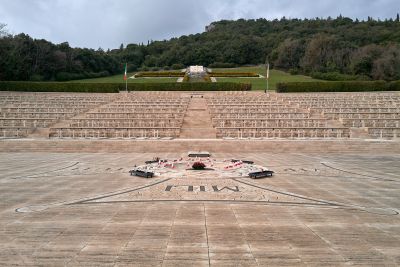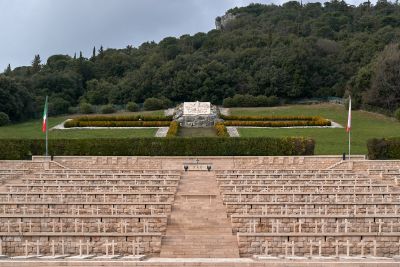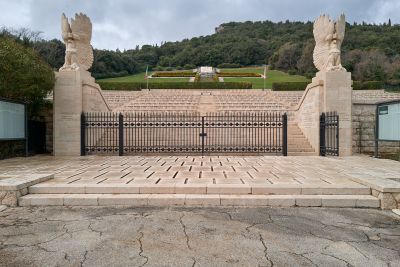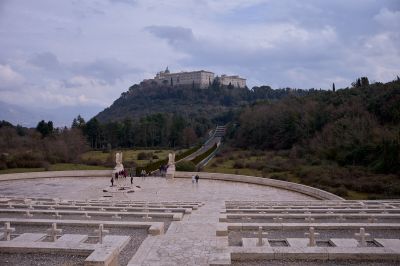Józef Feliks Gawlina (1892–1964). Legendary Polish pastor in Germany

The Second World War
Gawlina was in Warsaw at the outbreak of the Second World War. On 4 September 1939, the army curia was evacuated, and during the night of 6 to 7 September, he left the capital at the order of the Marshal of Poland, Edward Śmigły-Rydz. He reached Łuck (Lutsk), where he was wounded. On 18 September, he crossed the Polish-Romanian border. From Bucharest, he travelled on to Rome via Hungary. Pope Pius XII received him for an audience and extended his tenure as army bishop. Gawlina then continued to France, where he took up his post as field bishop to the Polish Army in France on 18 October 1939. On 12 November 1939, he was appointed Deputy Chairman of the Polish Red Cross for the duration of the war by General Władysław Sikorski. Since he was otherwise unable to remain in contact with the Polish soldiers who had fled the country in the wake of the attacks on Poland by Germany, he held masses and gave sermons for them via radio. He published the “Prayer book of Polish Soldiers”. He was a member of the National Council of Poland, the military commission and the legal and constitutional commission, and of the Supreme Council of the Global Union of Poles (Światowy Związek Polaków z Zagranicy) in France. In October 1940, after the defeat of France, he escaped to England.
In January 1942, he left London and together with Father Marcin Chrostowski OP, travelled by sea, air and land through Ghana, Nigeria and other African countries to Palestine. After spending a longer period of time in Baghdad and Iran, and due to the difficulties of flying directly to Moscow, they reached Baku on 19 April, and from there, travelled by train to the Russian capital, which they reached several days later. In May 1942, with the help of Father Braun, an American Assumptionist (the only official Catholic priest in Moscow), they continued by train to Kuybyshev in western Siberia. The Polish ambassador, Stanisław Kot, supported him by providing information and also helped to organise the departure from Russia of the Polish soldiers, civilians and above all the children who had been deported there. Gawlina visited military units, and held discussions with General Władysław Anders, pastors and soldiers. He travelled through Uzbekistan, Tajikistan and Kazakhstan. After numerous protracted negotiations, Joseph Stalin agreed to allow 70,000 people to leave Russia, among them more than 2,000 children, who had been deported to Siberia after 17 September 1939 when the Soviets had conquered eastern Poland. The departure proved difficult to arrange. The route out led through Iran and Iraq to Palestine. The operation took more than a year to complete.
In February 1942, Gawlina travelled to the United States. In Florida, he visited the apostolic delegate Amleto Cicognani and the Polish ambassador Jan Ciechanowski. In Washington, he held talks with US President Franklin D. Roosevelt (24 February 1943) and then with US bishops and representatives of Polish organisations in New York, Detroit, Buffalo, Chicago and Philadelphia. He also spoke with leading figures in the NCWC (National Catholic Welfare Conference) and the Catholic League. Wherever he went, he addressed the problem of the Polish children still remaining in the Soviet Union. At the end of April, he arrived in Cairo, visited Polish units in Iran and Egypt, and flew to England to attend the funeral of General Sikorski. Later, he joined the 2nd Corps, and with his fellow corps members fought battles in Italy, including the Battle of Monte Cassino. In June 1944, he was granted an audience with Pope Pius XII. In the State Secretariat, Gawlina held discussions with Monsignores Tardini and Montini (who later became Pope Paul VI). In April 1945, he flew to northern Germany. There, he visited the camp in Oberlangen for the women deported from the Warsaw uprising and the Polish military units in Papenburg and Walchum. He then travelled to Brussels, where he set up pastoral care centres for the military and provided pastoral care himself. During the war, he founded two seminaries in Beirut and Glasgow. In 1947, he founded the Hosianum publishing house in Rome.
Bishop for the Poles living in Germany
On 4 June 1945, Gawlina was appointed ordinary to the “civilian Poles” in Germany and Austria, in addition to his responsibility for the military pastoral care. He addressed a special message to the priests in Dachau concentration camp, and thanked them for their testimony of faith and strength of spirit. On 26 June 1945, he arrived in Munich, bringing the first material aid to the priests. He met with them in Dachau and Freimann, and appointed Father Franciszek Jedwabski as vicar general, with the task of establishing an episcopal curia. In June and July 1945, more than 500 priests, former prisoners of the concentration camps in Dachau and Mauthausen in Austria, volunteered to offer pastoral care in three of the four zones of occupation: the American, British and French. At first, the curia was based in the Freimann camp; from November onwards, its head office was in Frankfurt/Main. Father Jedwabski was recalled to Rome. Edward Lubowiecki, a priest from the diocese of Kraków, who until then had been a priest in Linz, became the new vicar general. On 29 June 1945, Gawlina began travelling to the centres for displaced persons (DPs) in the American zone, in Rebdorf, Weißenburg, Wildflecken, Coburg, Murnau and elsewhere. He paid multiple visits to the American and British authorities, the German bishops and the liaison officers in the DP camps. Bishop Gawlina published the curia agenda “Official News” for priests, and on 1 August 1945, the “Pastoral Instruction” as a legal and administrative guideline for the work of the priests (published until 1949), such as how to keep activity records and archives, the upkeep of graves, school education and support for compatriots in the DP camps. On 25 August, he publicly announced the new pastoral structure of his diocese and replaced six local deacons. He conducted talks with American and British leaders about pastoral care for Polish DPs in the camps and in the guard and labour companies. In 1945, he visited camps, conferring the sacrament of confirmation and coming into contact with the officers of the occupying forces, often with a less than pleasant outcome. The first visit was paid to the American zone (29/6–27/8/1945), and the second to the British zone (25/10–22/12/1945). The vicar general regularly corresponded with the ordinary and coordinated everyday diocesan matters with him. The bishop was concerned about the attitude among the occupying authorities towards the Poles – both those who had survived the concentration camps and the forced labourers who had been deported to the Reich to work there. He was a true patriot, encouraging the Poles to be loyal to their homeland at every opportunity, even though for political reasons, he was unable to return there himself.

